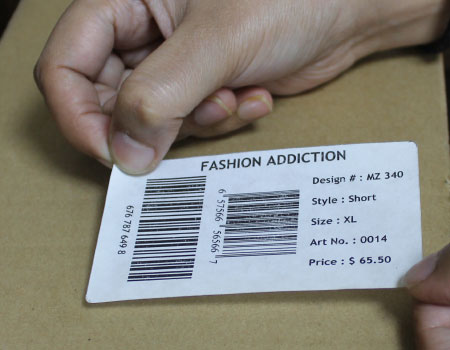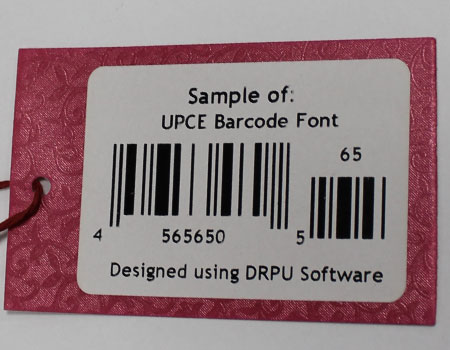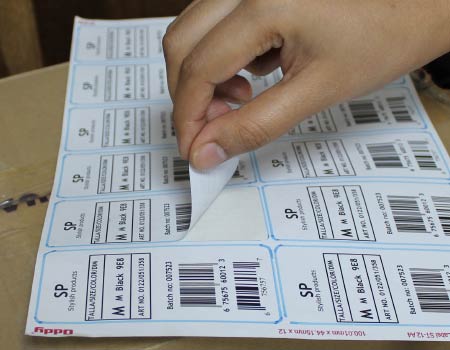Posted By: Digital Deeper | Last Updated On:
Barcode type depends on several factors, including the type of product or asset being tracked, the environment in which it will be used, and the level of detail required for tracking. By choosing the right barcode type for their specific needs, businesses can maximize the benefits of barcode technology and streamline their inventory management processes.
Inventory control barcodes are essential tools for managing inventory in businesses of all sizes. They provide a quick and efficient way to track products, equipment, and assets, and can help businesses reduce errors, increase efficiency, and save time and money. are several types of barcodes that can be used for inventory management, each with its own advantages and disadvantages.
Choose Right Barcode Scanner for Inventory System
When choosing a barcode scanner for your inventory system, you should consider the following factors:

- ✅ Use barcode labels: Make sure that the scanner can read the type of barcode you will be using, such as UPC, EAN, or Code 128.
- ☍ Connection type: Decide whether you want a wired or wireless scanner. A wired scanner may be more reliable, but a wireless scanner provides more flexibility.
- 🛠 Durability: Consider the environment in which the scanner will be used. If it will be used in a rugged environment, such as a warehouse, you may need a more durable scanner.
- 🔍 Scan distance: Determine the range at which the scanner needs to be able to read barcodes. If you will be scanning items on high shelves, you may need a scanner with a longer scan distance.
- Δ Speed: Consider the speed at which the scanner can read barcodes. If you have a large inventory, you may need a scanner that can read quickly.
- 🧩 Compatibility: Make sure that the scanner is compatible with your inventory management system.Check the specifications of the scanner and the software to ensure that they are compatible.
- 💰 Price: Consider the cost of the scanner and how it fits within your budget.
Overall, it's important to choose a barcode scanner that is reliable, durable, and compatible with your inventory system.
Available Types Of Inventory Management Control Barcodes Application
Here are some of the most common types of inventory control barcodes available:
-
Code 39:
Code 39 is a popular linear barcode used in inventory management. It can encode alphanumeric data, and is widely used for tracking inventory and assets in retail, manufacturing, and logistics industries. Code 39 barcodes can be read quickly and easily using handheld barcode scanners.
-
Code 128:
Code 128 is another widely used linear barcode that can encode a wide range of data, including alphanumeric characters, symbols, and special characters. Code 128 barcodes are used in a variety of industries, including manufacturing, retails, transports and healthcare and many more.
-
UPC (Universal Product Code):
Universal Product Code barcodes are linear barcodes are used to track products in the retail industry. They are often found on product packaging and can be scanned at the point of sale to automatically identify and price products. Widely used worldwide for tracking trade items in stores.
-
RFID (Radio Frequency Identification):
RFID tags are not technically barcodes, but they are commonly used in inventory management. RFID tags use radio waves to transmit information between a tag and a reader, and can be used to track and manage inventory in real-time.
-
DataMatrix:
DataMatrix is another 2D barcode commonly used in inventory management, marketing & advertising, education. It can store a large amount of data in a small space, making it ideal for tracking small items or products with limited space for labeling. QR Code can store alphanumeric characters.
-
QR (Quick Response) Code:
QR codes are 2D barcodes that can store much more data than linear barcodes. They are often used in inventory management to track products and equipment,supply chain, marketing and advertising and can be scanned using smartphones or specialized barcode scanners.
Types of Inventory Barcode Software
Choosing the right type of barcode for your inventory control needs depends on various factors such as the type of products you are dealing with, the environment in which they are stored, and the barcode scanning technology you are using. Here are some commonly used barcode types for inventory control:
| UPC (Universal Product Code): |
This barcode type is widely used in retail environments and is used to identify products and track inventory. It can be read using basic barcode scanners and contains information about the manufacturer, product, and price. |
| Code 39: |
This is a commonly used barcode type that can encode alphanumeric data, including letters, numbers, and some special characters. It is suitable for use in low-density environments and can be read using basic barcode scanners. |
| Code 128: |
This barcode type is more versatile than Code 39 and can encode more characters per unit of space. It is suitable for use in high-density environments and can be read using high-performance barcode scanners |
| EAN (European Article Number): |
This barcode type is similar to UPC and is used in Europe and other parts of the world. It can be read using basic barcode scanners and contains information about the manufacturer, product, and price. |
When choosing the right type of barcode for your inventory control needs, you should consider factors such as the type of products you are dealing with, the environment in which they are stored, and the barcode scanning technology you are using.
Create Inventory Barcodes Software
To create inventory barcodes, you can follow these steps:

- Choose a barcode symbology: Decide on the type of barcode symbology that best suits your needs. Popular barcode symbologies for inventory management include Code 39, Code 128, UPC, EAN, and QR codes.
- Obtain a barcode maker software: There are many barcode maker software available online that you can use to create inventory barcodes. Some popular ones include BarTender, Labeljoy, NiceLabel, and ZebraDesigner.
- Enter the data: Enter the data that you want to encode in the barcode. This can include product names, SKUs, or other identifiers.
- Customize the barcode: You can customize the barcode by choosing the size, color, font, and other design elements.
- Preview and print the barcode: Preview the barcode to ensure that it contains the correct information and is scannable. Then, print the barcode on adhesive labels or directly onto the inventory item.
- Test the barcode: Test the barcode to ensure that it is scannable and that the information is correct.
Remember to follow best practices for barcode creation, such as using high-quality printers and labels, ensuring proper placement of the barcode, and regularly verifying the accuracy and scannability of the barcodes.
The choice of barcode type depends on several factors, including the type of product or asset being tracked, the environment in which it will be used, and the level of detail required for tracking. For example, Code 39 and Code 128 barcodes are commonly used for tracking inventory in manufacturing and logistics industries, while QR codes are often used for tracking equipment and assets in healthcare and other industries.
Overall, inventory control barcodes provide businesses with a reliable and efficient way to track products, assets, and equipment, helping to improve efficiency, reduce errors, and increase profitability. By choosing the right barcode type for their specific needs, businesses can maximize the benefits of barcode technology and streamline their inventory management processes.
Print Barcode Labels Inventory Items
To create and print barcode labels for your inventory items, you can follow these general steps:

- Determine the barcode symbology: Choose the barcode symbology that best suits your needs. Some popular options for inventory management include Code 39, Code 128, and UPC.
- Generate barcodes: Use a barcode generator tool or software to generate the barcode numbers and corresponding images. You can also create custom labels with additional information, such as product name, price, and quantity.
- Choose a label printer: Select a label printer that is compatible with your computer and can produce high-quality barcode labels.
- Load label paper: Load label paper into the printer and adjust the settings, such as print resolution, label size, and darkness.
- Print the labels: Use the label maker software to design and print the barcode labels. Be sure to test the labels to ensure they are scannable and accurate.
- Apply the labels: Apply the barcode labels to your inventory items in a visible and easily scannable location.
- Update your inventory system: Update your inventory management system to include the new barcode labels and track the inventory movements using barcode scanning devices.
By following these steps, you can create and print barcode labels for your inventory items, which will help you keep track of your stock and improve efficiency in your inventory management process.